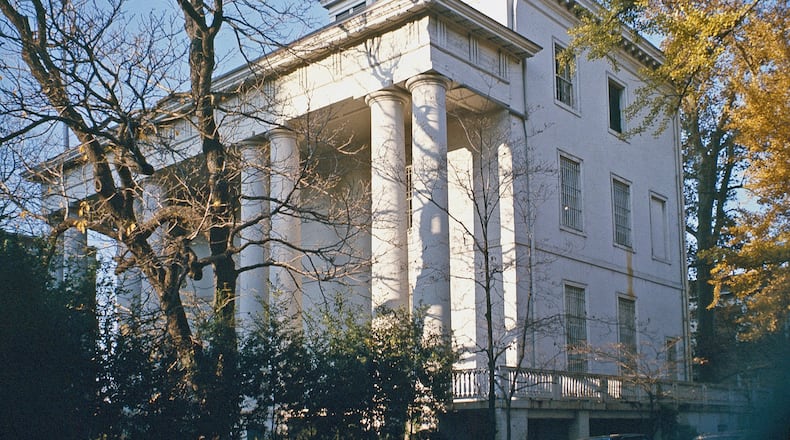In 1867, Mary Richards, the lone teacher at the small schoolhouse for newly emancipated African Americans in St. Marys, Georgia, had the same laments many public school teachers do today: large class sizes, poor pay, not enough supplies for students.
So, she wrote a series of letters to the superintendent of education for the Georgia Freedmen’s Bureau, a branch of the federal agency charged with helping formerly enslaved African Americans acclimate to life as free people after the Civil War. Yet, beyond more books, Richards felt she and her students needed security.
“I wish there was some law here, or some protection,” Richards wrote. “I know the southerners pretty well, and their present appearance is not at all favorable, having been in the service so long as a detective that I still find myself scrutinizing them closely … These secret societies are doing something, at least trying to do something … I fear there is more room for watchfulness than the Authorities believe.”
>> RELATED: Some of Central Park Five, T.I., Ebenezer pastor take part in criminal justice reform efforts
By “secret societies,” Richards meant anti-black terrorist groups such as the Ku Klux Klan. Her senses were heightened because before she was a teacher in coastal Georgia, Richards was part of an interracial spy ring of Union loyalists in Richmond, Virginia, that helped bring down the Confederacy and end the Civil War. Richards, also known as Mary Richards Bowser, had one of the more perilous missions: She was able to get information out of the Confederate White House, home of Jefferson Davis, the rebel president. There was just one thing: Richards lived as a free black woman. To get information, she had to pose as enslaved.
How she came to play such a critical role in the spy ring is a tale fitting of Juneteenth, or June 19, the day in 1865 that African Americans in Texas still laboring as enslaved found out by federal decree that the war was over and that they were free. Though it originated in Texas, Juneteenth has come to symbolize the emancipation of black people throughout the South. Commemorations and celebrations have spread to black communities across the country, including those in metro Atlanta.
>> RELATED: 5 facts about Juneteenth, which marks the last day of slavery
Richards had been born into slavery in the early 1840s and labeled as property of the Van Lews, a prominent family with Northern and, ironically, abolitionist roots. The Van Lews made their money and mark once they moved to Richmond. The young Richards caught the interest of Elizabeth Van Lew, one of three older Van Lew children, who became the architect and leader of the spy ring. The Van Lews had Richards baptized in a white church, a rarity in that time, and sent Richards to be educated in New Jersey. They sent her as a teenager as a missionary to Liberia, by then an independent African republic founded in the early 1800s, in part by a group of white Americans and free black people. Liberia was to be a new nation for free black Americans.
It’s not clear whether the Van Lews officially manumitted Richards prior to her going to Africa, but before leaving, she had been allowed to move about as free. After five years in Liberia, when Richards said she wanted to come back to America, Elizabeth Van Lew arranged it and paid for her passage. Richards worked as a domestic for the Van Lews and was treated by the family apparently as a free woman. They held her wedding to Wilson Bowser at the same church where she was baptized.
“It’s not clear why the Van Lews singled her out, but their unusual treatment of her does reflect Elizabeth Van Lew’s prewar belief that slavery could be mitigated or dismantled by individual acts of manumission and benevolence,” said Elizabeth Varon, a history professor at the University of Virginia and author of the Elizabeth Van Lew biography, “Southern Lady, Yankee Spy: The True Story of Elizabeth Van Lew, A Union Agent in the Heart of the Confederacy.”
Richards and other black people, enslaved and free, helped form the spine of Van Lew’s spy network. They could infiltrate places pro-Union whites in the Confederacy could not. Varon and other scholars of Bowser’s life, such as author Lois Leveen, agree on that point. But despite contemporary presentations of her story in popular podcasts and magazine accounts, the exact details of how Richards was able to do what she did remain a mystery.
The best evidence of Richards’ role comes from Van Lew’s diaries, an article published just before Van Lew died in 1900, and Richards herself.
“’When I open my eyes in the morning, I say to the servant, ‘What’s news, Mary?’ and my caterer never fails! Most generally our reliable news is gathered from negroes and they certainly show wisdom, discretion and prudence which is wonderful,’” Van Lew wrote in a journal during the war.
A local Richmond newspaper wrote a profile of Van Lew when she was near death. The article describes a formerly enslaved woman who worked for the family, had been educated in the Northeast and sent to Liberia then returned to Richmond. That woman was later placed by the Van Lews as a domestic worker in the Confederate White House, according to the article, though it’s unclear whether Van Lew relayed all this on her deathbed. What specific secrets did she overhear? What documents did she read? It’s unclear. Years later, Van Lew’s niece identified the woman in the article as Mary Richards Bowser.
Secrecy and public vagary are essential to spycraft, said the writer Leveen, who is working on a biography of Richards and who wrote “The Secrets of Mary Bowser,” a fictionalized account of Richards’ life.
“We can’t say, ‘These are the battle plans Mary smuggled out of the Confederate White House,’” said Leveen. “It’s not like in a Hollywood movie. But I have no doubt Mary was instrumental in helping to undermine the Confederacy.”
For her part, Richards — who by the time she began teaching in Freedmen’s schools had dropped her married name and, apparently, her husband — gave a series of talks in New York City after the war in 1865. She used pseudonyms when presenting, Leveen said, such as Richmonia Richards. In those presentations, covered by the local press, she talked about her time in Liberia and her wartime exploits, taking care of Union prisoners in a Confederate prison in Richmond, and some forms of espionage in the Confederate White House. But she was apparently short on details, something that has frustrated historians.
By chance, while teaching in Georgia, Richards met Harriet Beecher Stowe, whose seminal work, “Uncle Tom’s Cabin,” played a role in the prelude to the war. Beecher Stowe wrote about their meeting in a Boston newspaper, said Leveen, but again the accounts don’t provide details of Richards’ spycraft.
That is why Richards’ letters from Georgia are significant, said Leveen, because she is speaking for herself in her own hand. Until earlier this year, they were the last known correspondence by Richards. After 1867, she disappeared from the historical record, confounding historians further.
Earlier this year, representatives from an Ohio auction house contacted Leveen about a letter they acquired. They believed it was written by Richards. The 1870 signature on the letter was “M J Denman,” and the envelope was addressed to Elizabeth Van Lew. In it, she tells Van Lew, “I suppose you are somewhat displeased with me,” and goes on to ask Van Lew for help. By then, Richards had married a man whose last name was Denman.
“I yelped when I saw a picture of the letter,” Leveen said.
She has written an article for the Los Angeles Review of Books that appears June 19 about her quest to authenticate the letter and add another chapter in the mystery of Richards. Regardless of the ambiguity surrounding the specifics of Richards’ life as a spy, it’s what Richards represents that most matters, Leveen said.
“The idea that there was a black spy in the Confederate White House is so captivating that it obscures the other African Americans who worked in spy rings to bring the Confederacy down,” Leveen said. “The Union Underground couldn’t have done what it did without black people.”
About the Author
The Latest
Featured




